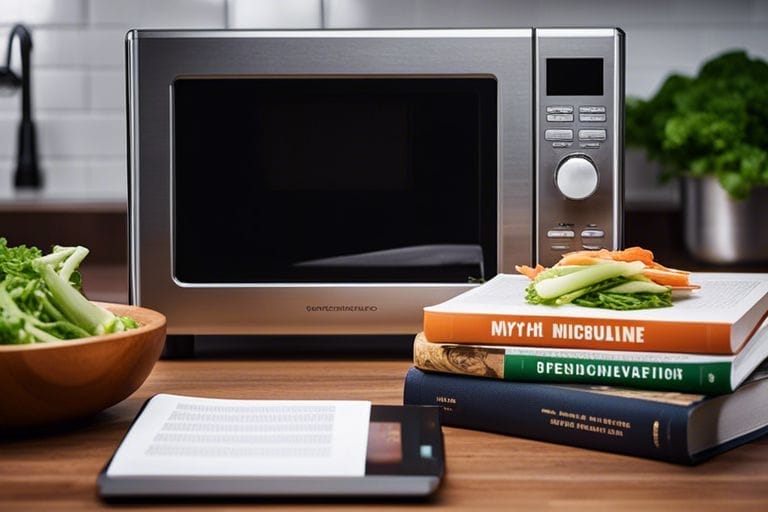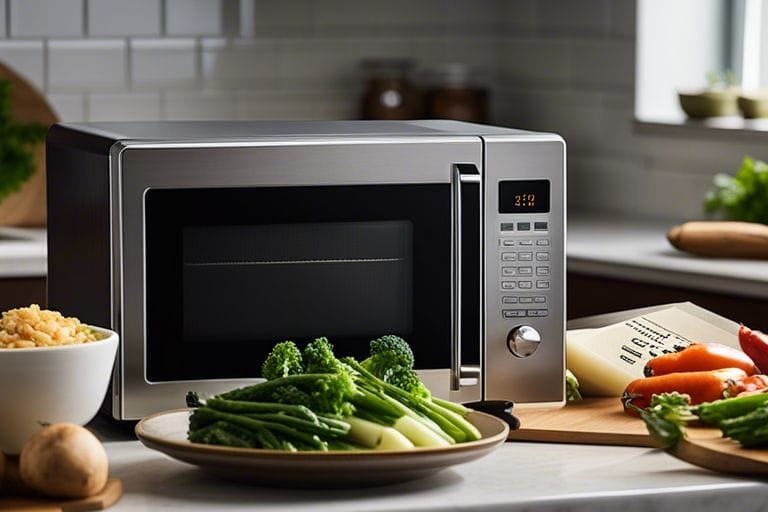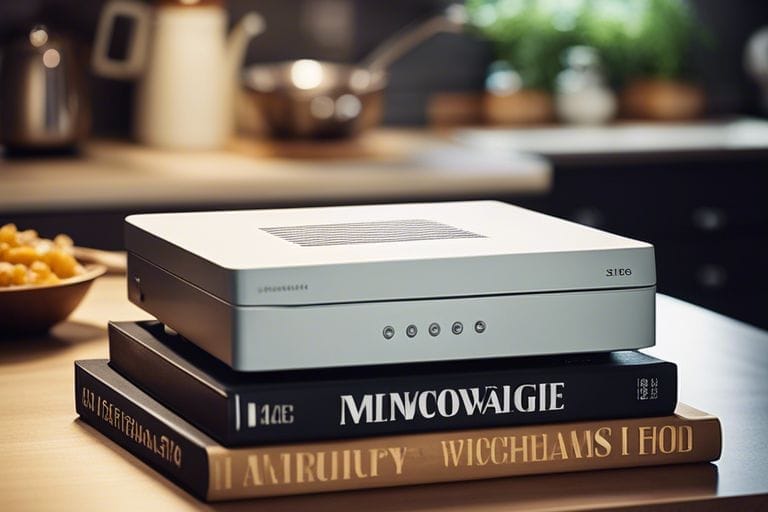Settle the debate once and for all – is microwave cooking safe for you and your family? There’s a lot of misinformation out there about the safety of using a microwave, so it’s important to separate fact from fiction. You might have heard rumors about radiation leakage, nutrient loss, and even the potential for carcinogens to form in your food. In this post, we’ll delve into the real science behind microwave cooking and debunk these common myths. We’ll help you make an informed decision about whether to continue using your microwave or opt for other cooking methods.
Key Takeaways:
- Microwave cooking is safe when used properly: There is no evidence to suggest that microwave cooking is harmful when standard safety precautions are followed, such as using microwave-safe containers and not heating food in plastic containers or plastic wrap.
- Microwaves do not make food radioactive: Despite common myths, microwaves use radiation to cook food, not to make it radioactive. The energy used in microwaves is non-ionizing and does not make food radioactive or change its chemical composition.
- Proper usage of microwaves can help retain nutrients: When used correctly, microwaves can actually help retain more nutrients in food compared to other cooking methods, due to their shorter cooking times and minimal use of water.
Understanding Microwave Technology
While there are many myths and misconceptions surrounding microwave cooking, it’s important to understand the technology behind it to make an informed decision about its safety.
How Microwaves Work
Microwaves work by emitting non-ionizing radiation at a frequency of 2.45 GHz, which is absorbed by water, fats, and sugars in the food. This absorption causes the molecules to vibrate, generating heat and cooking the food from the inside out. Contrary to popular belief, microwaves do not make food radioactive and do not significantly alter its nutritional content.
Comparison with Conventional Cooking Methods
When it comes to cooking methods, you may wonder how microwave cooking compares to conventional methods such as stovetop cooking, baking, or grilling. Here’s a comparison to help you understand the differences:
| Speed | Heats food rapidly due to direct energy transfer to the molecules. |
| Heat Distribution | Can result in uneven cooking, especially in thicker foods. |
| Nutritional Value | Retains more nutrients due to shorter cooking times and less use of water. |
Understanding these differences will help you decide which cooking method is best for your specific needs and concerns.
Health and Safety Concerns
Assuming you are concerned about the safety of microwave cooking, you may have heard various myths related to health risks associated with using microwaves. It’s important to understand that microwaves are a form of non-ionizing radiation, which means they do not have enough energy to remove electrons from atoms or molecules. If you are interested in learning more about the science behind microwave safety, you can read this article Are Microwaves Safe? | Debunking Molecular Myths.
Radiation and Food Safety
When it comes to radiation and food safety, it’s important to note that microwaves only produce radiation when they are in use. Once the microwave is turned off, the radiation stops. During the cooking process, microwaves work by causing water molecules in the food to vibrate, creating heat that cooks the food. This is a different process than the ionizing radiation used in X-rays and gamma rays, which can pose a health risk. Overall, microwave radiation does not make your food radioactive, and it is safe to consume.
Nutrient Retention in Microwave Cooking
One of the concerns you may have about microwave cooking is whether it affects the retention of nutrients in food. While it’s true that some nutrients can be sensitive to heat, including vitamin C and B vitamins, microwave cooking can actually help to retain more nutrients compared to other cooking methods. The shorter cooking times and minimal use of water in microwave cooking can help preserve the nutritional content of your food. Just be sure to use microwave-safe containers and cover your food to avoid nutrient loss through steam.

Common Myths about Microwave Cooking
After reading about the safety concerns of microwave cooking, you might have come across various myths and misconceptions. These myths often contribute to the fear surrounding microwave use. But it’s important to separate fact from fiction. To help you with that, here are a few common myths about microwave cooking that need to be debunked. You can find more information on this topic 5 Microwave Myths Debunked.
Exploring the Cancer Myth
One of the most pervasive myths about microwave cooking is its supposed link to cancer. Some people believe that microwave cooking can increase the risk of cancer due to radiation exposure. However, the truth is that microwaves use non-ionizing radiation, which is not powerful enough to damage your DNA and cause cancer. In fact, studies have shown that microwaving food can actually help retain more nutrients compared to other cooking methods. So, you can put your mind at ease when it comes to this particular myth.
The Truth About Microwaved Plastic
Another common myth is that microwaving food in plastic containers can release harmful chemicals into your food. While it’s true that some plastics can leach chemicals into food when heated, most microwave-safe containers are designed to prevent this. When using microwave-safe plastic containers, you can be confident that they are specifically designed to withstand microwave temperatures without leaching harmful chemicals into your food. However, it’s still essential to follow the manufacturer’s guidelines and ensure that the plastic containers you use are labeled as microwave-safe.

Best Practices for Safe Microwave Use
Not only is it important to debunk myths about the safety of microwave cooking, it is equally important to understand the best practices for using your microwave safely. By following these guidelines, you can minimize any potential risks and ensure that your food is cooked evenly and thoroughly.
Selecting Microwave-Safe Utensils
When it comes to using utensils in the microwave, it is crucial to choose the right materials to avoid any risk of chemicals leaching into your food or causing a fire hazard. Always look for microwave-safe labels on glass, ceramic, and plastic containers. Avoid using metal or aluminum foil, which can cause sparks and potential fire hazards. It is also advisable to avoid plastic containers with the recycling number 3 or 7, as they may contain unsafe chemicals that can leach into your food when heated.
Tips for Even and Safe Heating
For even and safe heating, it is important to cover your food with a microwave-safe lid or vented plastic wrap to prevent splattering and to help your food cook more evenly. When heating liquids, always place a wooden spoon or a microwave-safe stir stick to avoid superheating and potential spillage. Additionally, arrange your food in a manner that promotes even cooking – place thicker portions towards the outside of the dish, and create a well in the center for even heat distribution. Recognizing the importance of these tips will help you ensure that your food is heated safely and thoroughly throughout.
- Use microwave-safe utensils
- Avoid metal or aluminum foil
- Cover food to prevent splattering
- Arrange food for even heating
Is Microwave Cooking Safe or Not? Debunking Myths
Presently, there is a lot of misinformation surrounding the safety of microwave cooking. However, after debunking the myths and conducting thorough research, it is clear that microwave cooking is indeed safe when used correctly. It does not deplete nutrients any more than traditional cooking methods and does not pose any health risks that cannot be found with other cooking methods. As long as you are following the manufacturer’s instructions and using microwave-safe containers, you can feel confident in the safety of your microwave cooking practices. So go ahead and enjoy the convenience and efficiency of microwave cooking without any reservations.
Is Microwave Cooking Safe or Not? Debunking Myths
Q: Is it safe to cook food in the microwave?
A: Yes, microwave cooking is safe when used according to manufacturer’s instructions. Microwaves cook food by using a type of energy that’s similar to radio waves but shorter. This energy is absorbed by the food and causes water molecules in the food to vibrate, which generates heat and cooks the food. As long as the microwave is in good working condition and the food is heated to the appropriate temperature, it is safe to cook food in the microwave.
Q: Are there any dangers associated with microwaving food?
A: When used properly, microwaving food is safe. However, it is important to use microwave-safe containers and follow cooking guidelines to avoid potential hazards. For example, using non-microwave-safe containers can cause them to melt or leach harmful chemicals into your food. Additionally, overheating or uneven cooking can result in burns or undercooked food, which could be a safety concern. It’s important to follow guidelines for cooking times and temperatures to ensure safe and effective cooking.
Q: Are there any health risks associated with consuming microwaved food?
A: There is no scientific evidence to support the claim that consuming microwaved food poses any health risks. Microwaves cook food by agitating water molecules, and this method is not inherently harmful. In fact, microwaving can be a healthier cooking option because it requires little to no added fats or oils. As with any cooking method, it’s important to use proper food safety practices, such as ensuring the food is cooked to the appropriate temperature and stored properly, to avoid any potential health risks.

